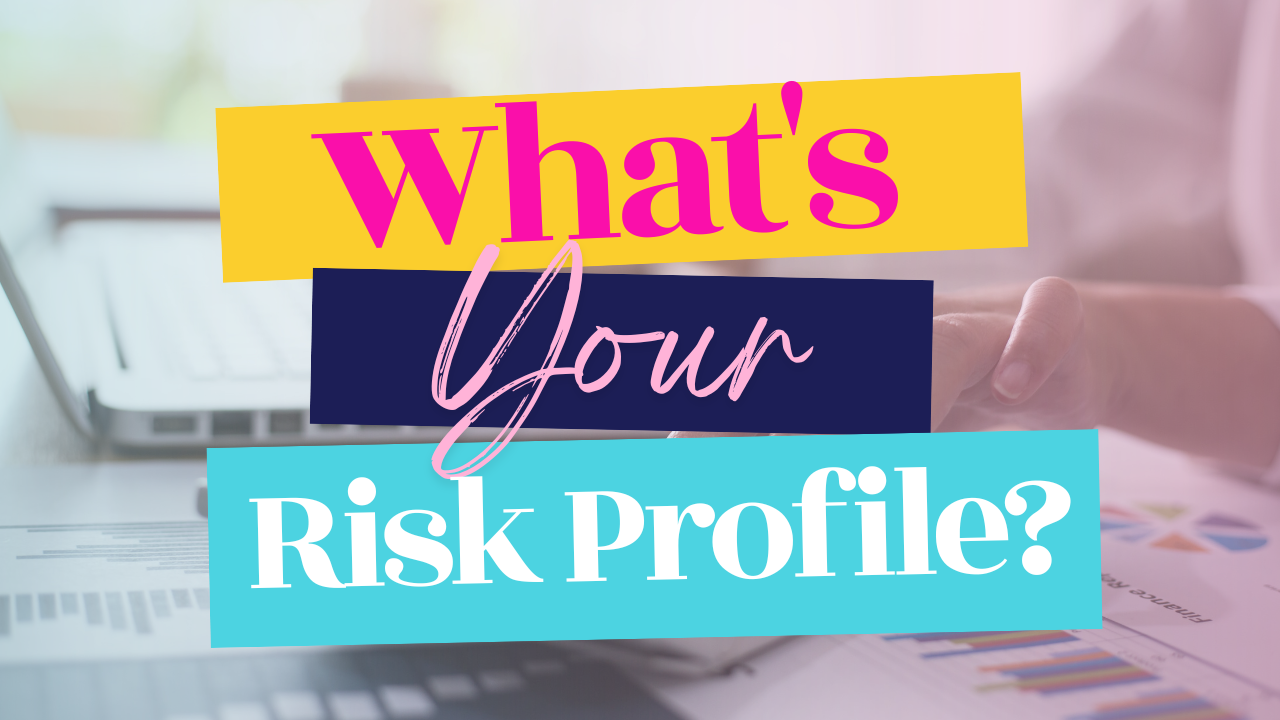What’s your Risk Profile?
Sep 15, 2022
Investing in the stock market can be daunting and overwhelming in the best of times. Without dedication and skill, starting can be a steep challenge. Just like all things in life, we have a personal preference and style to how we go about things. Investing is no different.
The first step to overcoming investment anxiety is determining your investing style or “risk profile” as it may be more commonly referred to. Without knowledge of two key drivers – a) your risk tolerance and b) the amount you want to invest – you can’t properly set return objectives and make clear and direct investment decisions to achieve them.
Think of this stage as a “getting to know yourself better” which helps identify your risk and return appetite, and framework for selecting the right investments for your circumstances.
The relationship between risk and return
Risk is represented as the volatility incurred with an investment, for example, a stock. Stocks can move up or down in value and these movements are described as volatility. Some stocks are more volatile than others and therefore considered “riskier.”
Your risk tolerance is your ability and willingness to take on risk when investing. It is the anchor to your investment style and a key influence on your investment decisions.
Hand in hand with risk is return. Riskier investments can have bigger rewards. Therefore, when you are choosing your investments, experts typically advise you try a balance your portfolio by selecting investments that match your risk tolerance – a combination of higher and lower risk investments.
Determining your risk tolerance

Typically, financial advisers will help guide investors to their optimal risk and return profile through a series of questions that measure an investor’s ability and willingness to take on risk for their desired return. It also measures an investor’s behavioural patterns and attitude towards market movements when markets go up and down. For example, if the Australian Equities Market was to fall 20%, would you likely sell your investments, hold your investments, or buy more investments? All these questions assess an investor’s likelihood of reaching their desired return based on having the ability or inability to stick to the plan.
Historically we have seen every downturn and recession countered by periods of growth that have exceeded the previous cycle. We believe if you are patient and weather the storm, you should see growth outpace losses and return on their investment. Therefore, the longer you remain invested the higher probability you have in reaching your return potential.
Other key factors in determining your risk and return profile are your age, your income and your saving goals.
Generally speaking, younger investors have the gift of time and may typically bear more risk. For example, if an older person is fast approaching retirement and looking to realise their return sooner rather than later, they may be more sensitive to market volatility and downturns which can compromise their plan.
Another aspect to risk tolerance that investors understate is the emotions associated with investments. Those who can’t stomach large losses in their investment or are prone to stress or panic, may want to consider starting with a more conservative approach regardless of age.
Typical Risk Profiles

How much should I invest and when do I invest?
Make sure it fits your basic household budget framework. Everyone has different circumstances, and you should seek guidance from a financial advice professional, however many people start by considering how much money they need to reach their overall goal and from there calculate how much they can afford to invest – and then decide how much they can set aside for their investments on a weekly to monthly basis. You don’t need large sums of money to get started. However, knowing the signs of when you are ready may set you up for a better investment experience. Some indicators are disposable income, no high interest debt, emergency fund and clear financial goals.
Disposable incomeAt the end of each month after all your expenses are paid, you may have some money left over. It doesn’t have to be a lot. The key is to stick with it, so the money invested works for you and grows over time.No high interest debtUsually, personal debt in the form of credit cards charge high interest rates between 15-18%. This cancels out the earning returns on your investments. Driving down your non-tax deductable debt is a key principle to freeing up your cashflow for investing.Emergency FundLife can throw some unexpected or unplanned expenses. Having a safety net of at least three months of expenses may give you the stability and assurance that investing can require. If something unexpected was to happen, your emergency fund could mean you won’t have to tap into your investments for long term goals.Clear financial goalsWhen you know where you’re heading, investing is a much more successful venture. That’s where having a clear goal comes into play. Perhaps you might be saving for a big holiday or a deposit for a home. Set the goal and set the timeframe.
When thinking about which risk profile is right for you, a clear understanding of your situation and financial goals may help you build a portfolio that truly reflects your risk tolerance. This helps take some of the guess work and anxiety out of investing. Making sure you are ready can also set you up for a more successful investing journey.
While there is no way of avoiding risk altogether in investing, having a clear framework and understanding of risk associated with investments should give you better confidence to make clearer investment decisions. Remember there are experts in the industry who can support and educate you on your investing journey.
At Perpetual Private we take a one-on-one approach to building our clients’ investment portfolios which gives them peace of mind that they are invested in line with their goals and objectives.
Feel empowered to start a conversation.

About the author
How Renee works with her clients:
#Insurance #Superannuation #Funding #Estate Planning #Cashflow #CharitableGiving
How to connect with Renee:
DisclaimerPerpetual Private advice and services are provided by Perpetual Trustee Company Limited (PTCo) ABN 42 000 001 007, AFSL 236643.This information contains general information only and is not intended to provide you with financial advice or take into account your objectives, financial situation or needs. You should consider, with a financial or other adviser, whether the information is suitable for your circumstances. To the extent permitted by law, no liability is accepted for any loss or damage as a result of any reliance on this information.The information is believed to be accurate at the time of compilation and is provided in good faith. This presentation may contain information contributed by third parties. PTCo does not warrant the accuracy or completeness of any information contributed by a third party. To view the Perpetual Private's Financial Services Guide, please click here.




